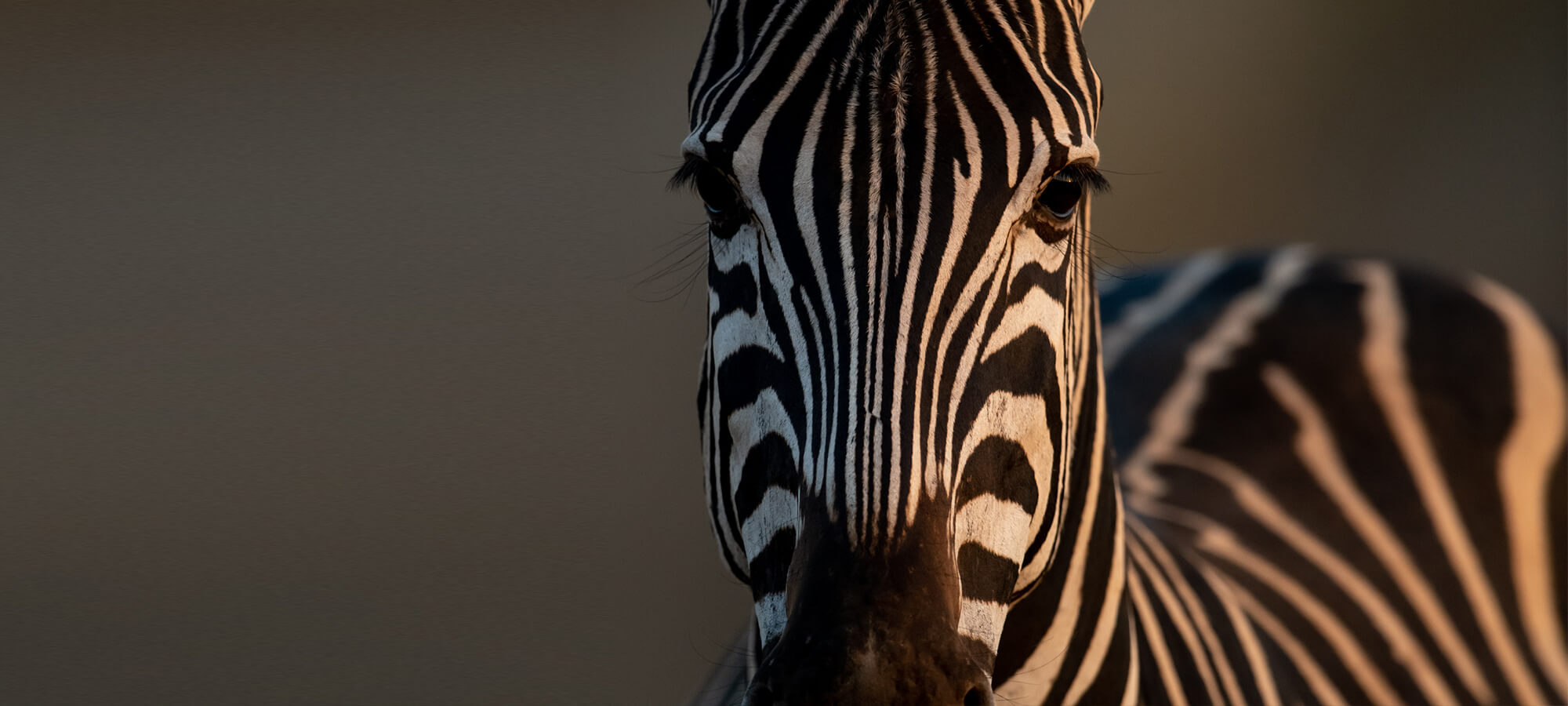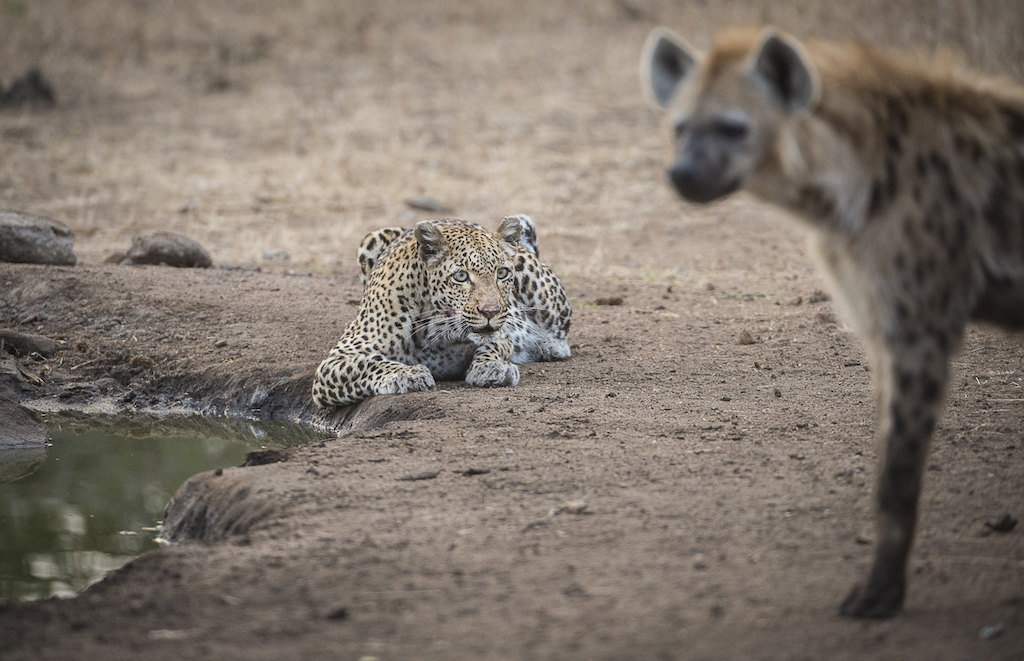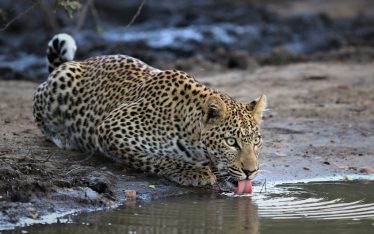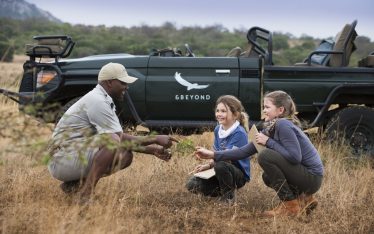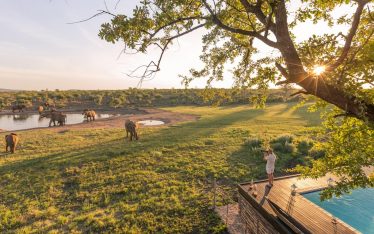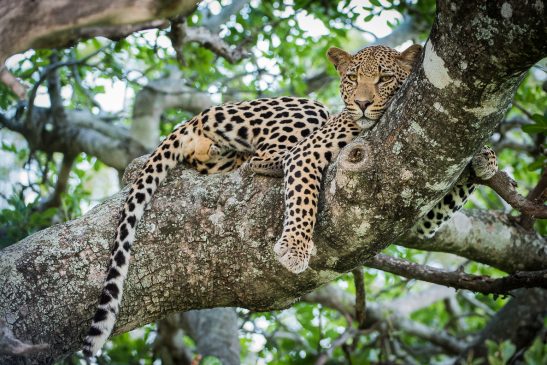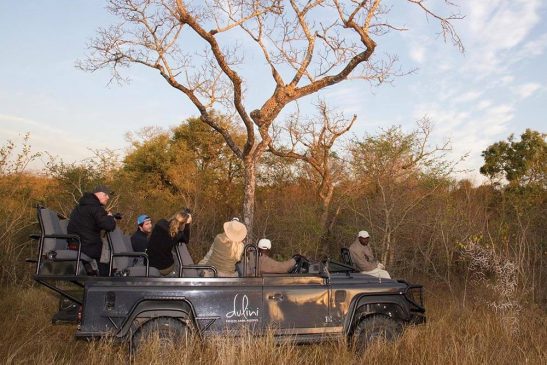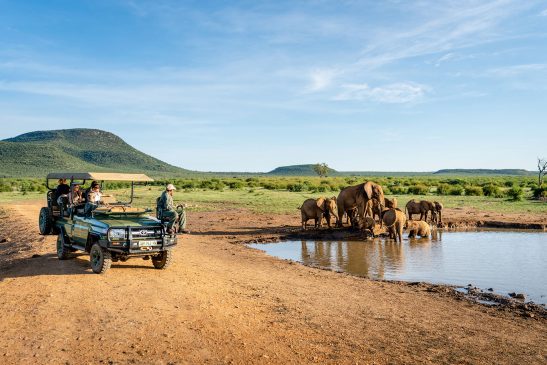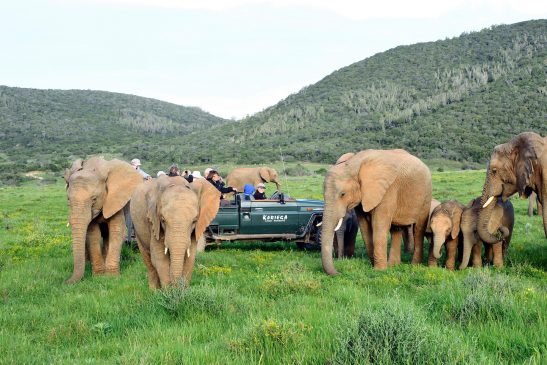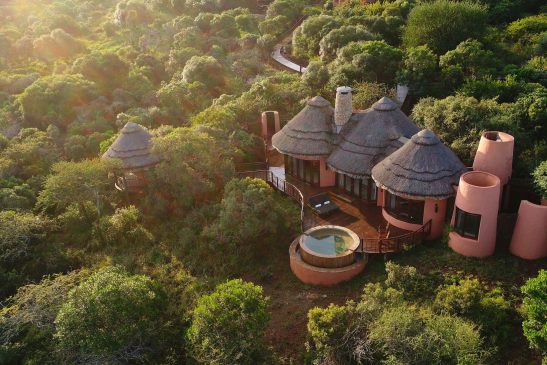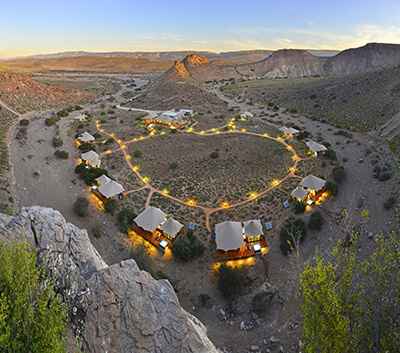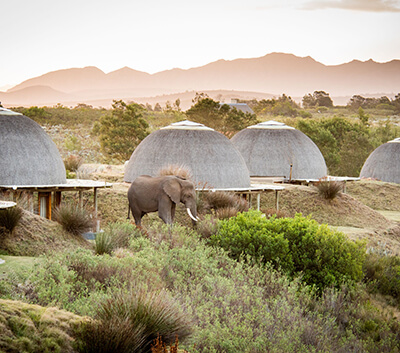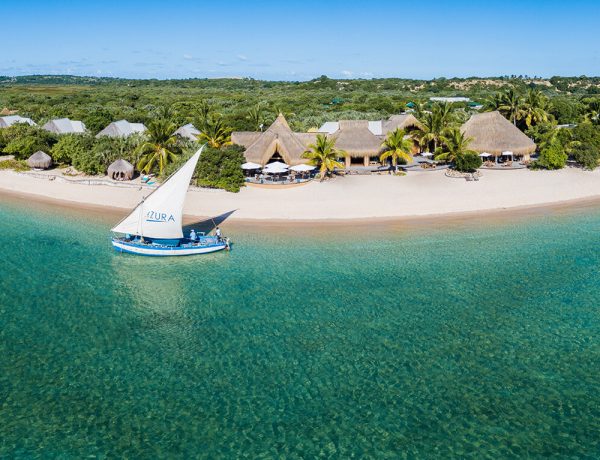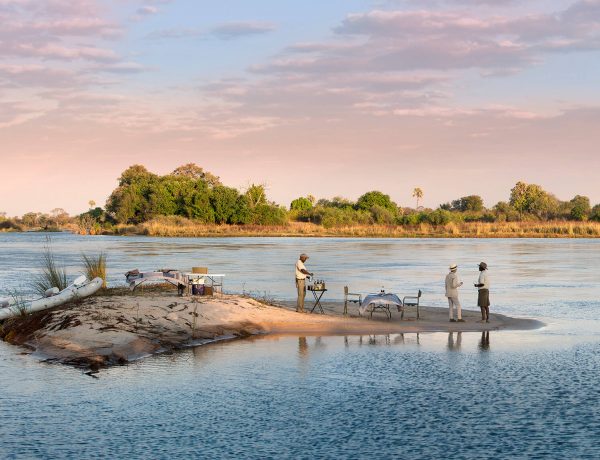Exciting, thrilling, extraordinary, heartwarming, and mind-blowing – these are just a few of the words that describe the experience of a Big Five safari. A Big Five safari offers travellers the rare opportunity to encounter Africa’s most iconic animals in their natural habitats: lion, leopard, elephant (African elephant), rhinoceros (black or white), and Cape buffalo. These safaris take place in game reserves or national parks across sub-Saharan Africa, where the landscapes range from vast savannas and acacia woodlands to wetlands and volcanic craters.
The term “Big Five” originated during the era of colonial big-game hunting and referred to the five most dangerous and challenging animals to hunt on foot due to their unpredictability and strength. Today, the term has been redefined by the conservation and tourism industries to represent the ultimate African wildlife safari experience, emphasizing ethical wildlife viewing and protection of these majestic species. Seeing all five in a single trip is considered a hallmark of a successful safari, making it a bucket-list goal for wildlife enthusiasts and nature lovers worldwide.
What are the Big 5 animals?
Lion
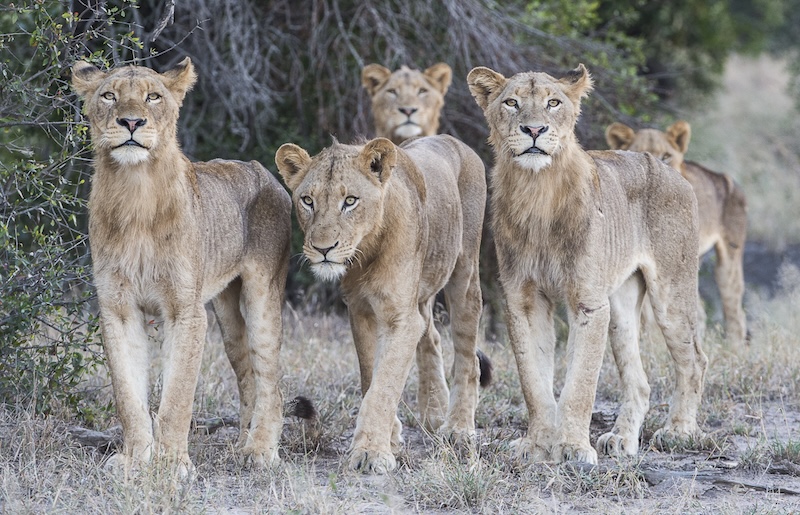
Commonly referred to as the “King of the Jungle,” the African lion is a powerful predator and an enduring symbol of strength and majesty. Lions are the only truly social big cats, living in structured groups known as prides, typically consisting of several related females, their cubs, and a coalition of dominant males. They are most active at dawn and dusk, with hunting often being a coordinated group effort. Lions are frequently observed in open grasslands and savannas, and are among the most reliable sightings on Big Five safaris, particularly in reserves such as the Sabi Sands (South Africa) or Masai Mara (Kenya).
Leopard
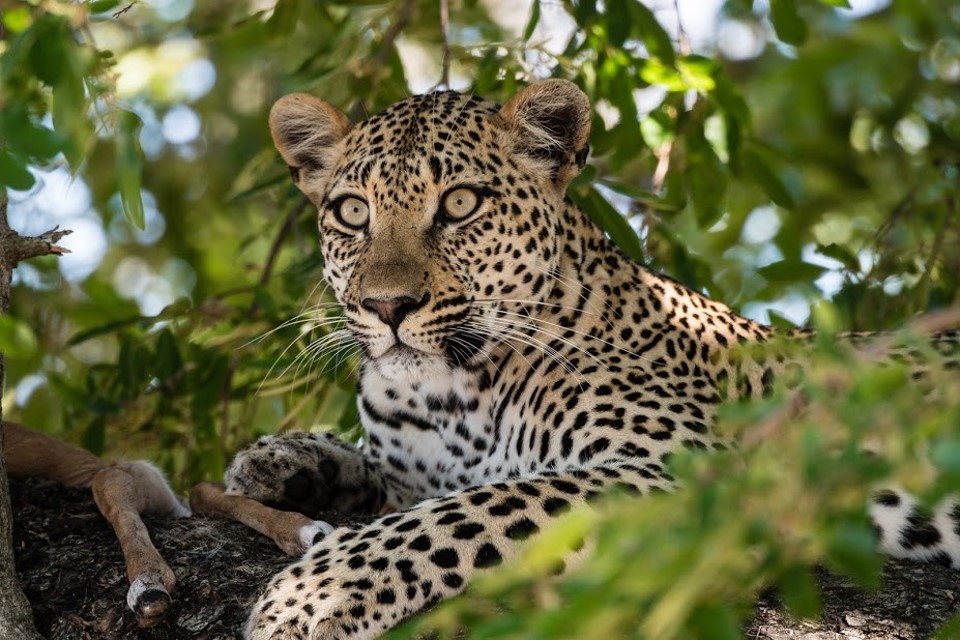
Leopards are the most elusive and secretive of the Big Five. Solitary and primarily nocturnal, they are masters of stealth and camouflage. Leopards are known for their remarkable agility, and it’s common to find them resting in trees during the day. They often drag their kills into tree branches to protect them from scavengers such as hyenas or lions. Spotting a leopard in the wild is a highlight of any safari, and the Sabi Sands Game Reserve in South Africa is particularly renowned for offering the world’s best leopard sightings.
Elephant
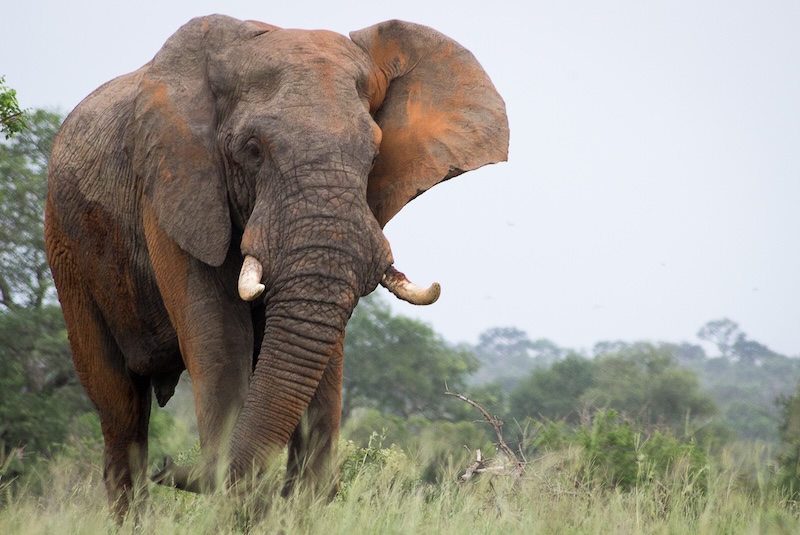
The African elephant is the largest land mammal on Earth. These intelligent and gentle giants are known for their complex social structures, long-term memory, and deep emotional intelligence. Elephant herds are matriarchal, led by an older female who guides the group based on years of experience. Elephants are frequently encountered on safari, especially in regions like Botswana’s Chobe National Park, Kruger National Park, and the Serengeti, where they can often be seen in large numbers. Their interactions, such as nurturing behavior and waterhole gatherings, offer captivating safari moments.
Rhinoceros
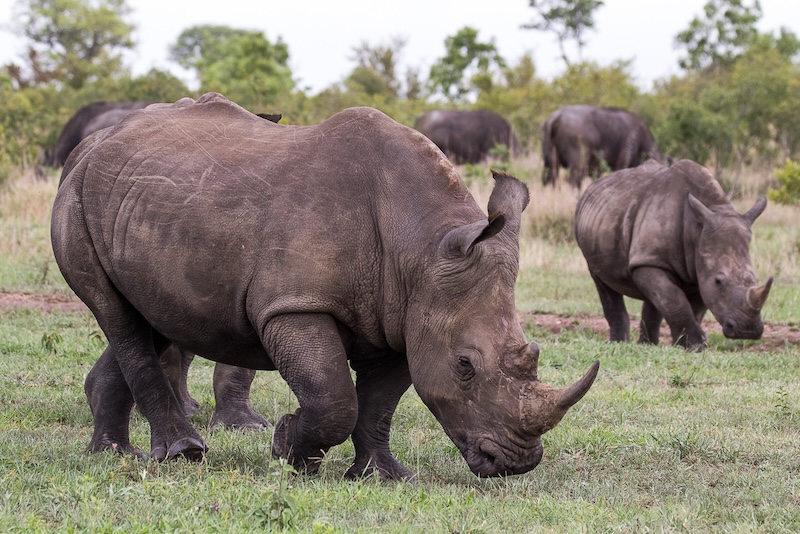
Africa is home to two rhino species: the black rhinoceros (Diceros bicornis) and the white rhinoceros (Ceratotherium simum). Despite the misleading names, both species are actually grey in colour. White rhinos are larger and more social, often seen grazing in open grasslands, while black rhinos are smaller, more solitary, and typically inhabit denser brush. Due to poaching and habitat loss, both species—especially the black rhino, are critically endangered, making sightings increasingly rare. Ngorongoro Crater (Tanzania) and private reserves in South Africa such as Phinda or Ongava in Namibia are among the best places to view rhinos safely and ethically.
Cape Buffalo
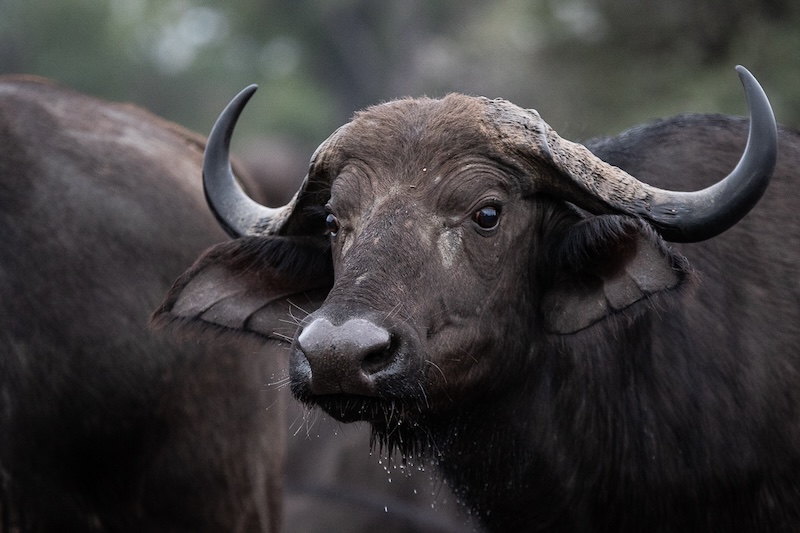
The Cape buffalo is considered one of Africa’s most dangerous animals due to its unpredictable and defensive behaviour. Often found in large herds, they rely on strength in numbers for protection from predators. Buffaloes are highly protective of their young and wounded members, and they’ve been known to confront even lions when threatened. Unlike other members of the Big Five, buffalo are not endangered and are relatively widespread across sub-Saharan Africa. Large herds are commonly seen in regions such as Kruger National Park, Okavango Delta, and Serengeti National Park.
Where to Go on a Big Five Safari
Most Big Five safaris occur in Southern and East Africa. The best sightings are often in private game reserves, which offer more flexible rules than national parks. In private reserves, vehicles can go off-road for closer wildlife encounters and are often open-sided, enhancing the viewing experience. These areas also limit the number of vehicles at a sighting, ensuring a more intimate and uncrowded experience.
1. South Africa
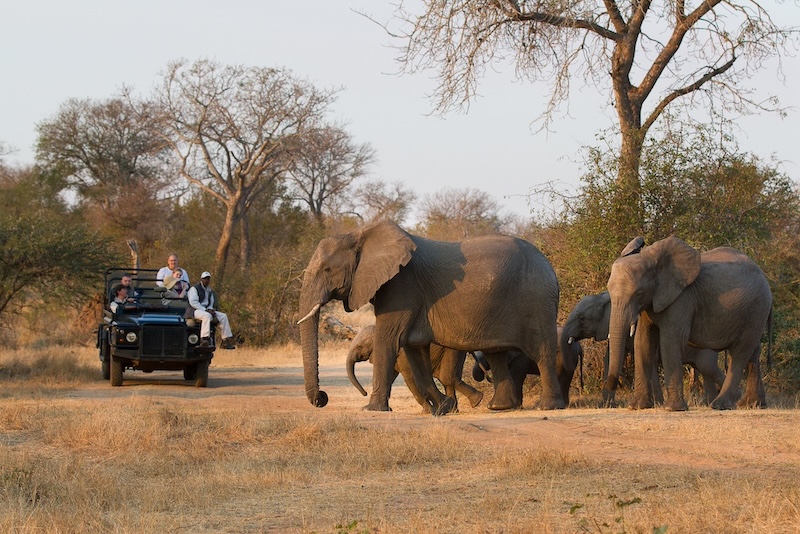
South Africa is one of the most accessible and well-developed safari destinations in Africa, known for its remarkable biodiversity and well-managed protected areas. Its varied landscapes, from savannahs and woodlands to wetlands and grasslands support thriving populations of the Big Five. The country’s network of national parks and private game reserves offers visitors a range of safari experiences, from rugged wilderness adventures to luxurious lodges. South Africa’s conservation programs have helped stabilize populations of threatened species such as rhinos, making it a crucial region for Big Five conservation and viewing.
Big-5 Highlights:
- Kruger National Park supports all Big Five species in abundance and is known for daily sightings, especially during the dry season.
- Sabi Sands is a leopard stronghold, where individual cats are well habituated to vehicles, offering rare photo opportunities.
- Madikwe offers frequent elephant and buffalo encounters and is one of the few places where you can see the Big Five in a malaria-free zone.
- KwaZulu-Natal and the Eastern Cape host important rhino conservation programs and are good for spotting both black and white rhinos.
2. Kenya
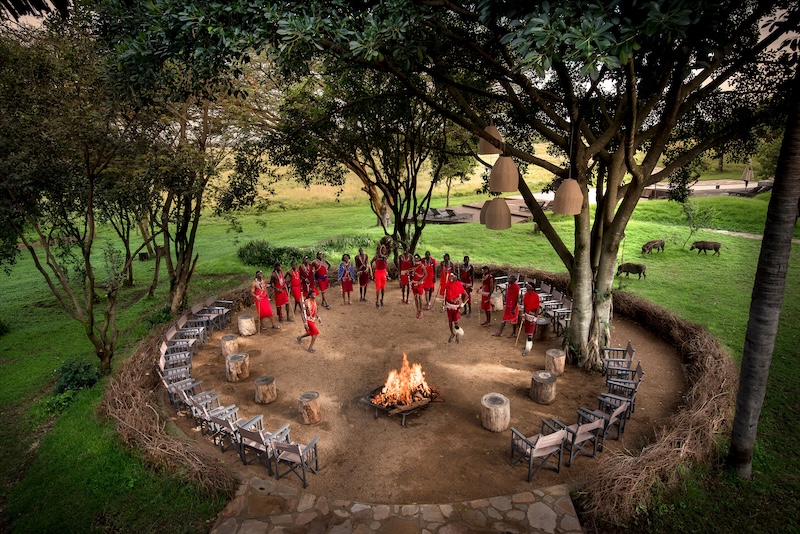
Kenya is often considered the birthplace of modern safari tourism and remains a benchmark for wildlife enthusiasts seeking authentic African wilderness experiences. Its iconic savannahs and vast national parks are home to an incredible diversity of wildlife, including healthy populations of the Big Five. Kenya’s ecosystems form part of the larger Serengeti-Mara migratory route, ensuring dynamic wildlife encounters throughout the year. The country’s commitment to conservation, combined with its vibrant cultures and landscapes, provides a holistic safari experience that educates visitors about the delicate balance between humans and wildlife.
Big-5 Highlights:
- The Masai Mara boasts excellent lion and buffalo sightings and seasonal leopard and rhino appearances, particularly in the Mara Triangle.
- Lake Nakuru is a sanctuary for white and black rhinos, making it one of the most dependable places for rhino sightings in Kenya.
- Amboseli, though not always included in Big Five circuits, is a top destination for iconic elephant views against Mt. Kilimanjaro.
3. Tanzania
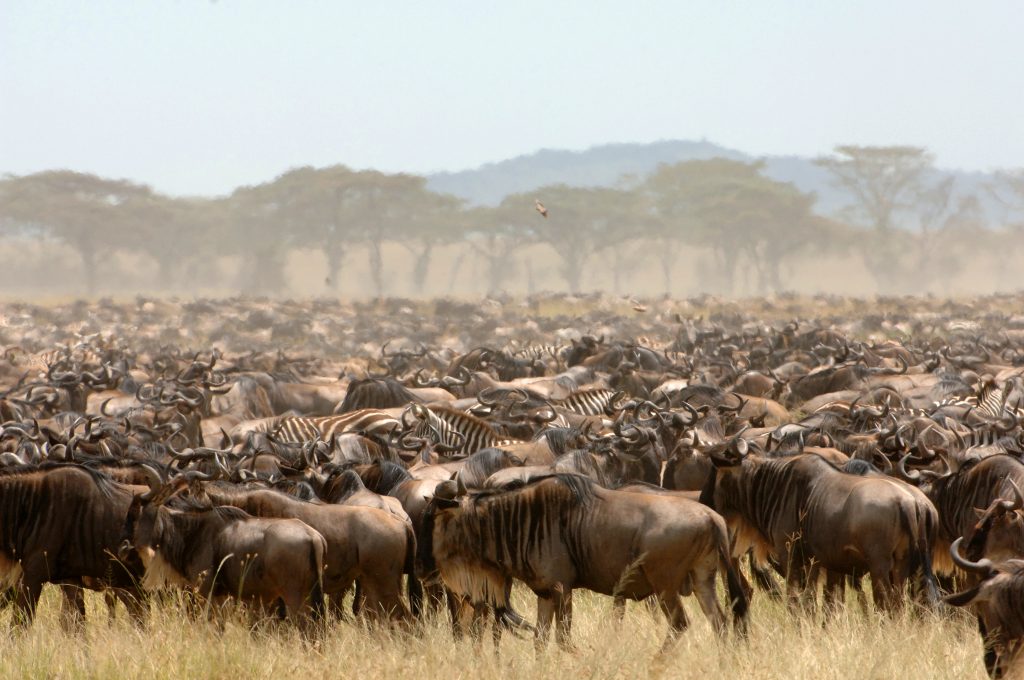
Tanzania boasts some of the most iconic and extensive protected areas in Africa, offering a world class safari experience rich in wildlife diversity. Its landscapes range from the endless plains of the Serengeti to the lush forests of the Ngorongoro Crater, supporting large populations of the Big Five. Tanzania’s ecosystems play a vital role in preserving biodiversity and serve as critical habitats for many endangered species, including black rhinos. The country’s well-established parks provide visitors with a unique opportunity to witness complex predator-prey interactions and large-scale migrations, making it a premier Big 5 destination.
Big-5 Highlights:
- Serengeti National Park is exceptional for lion sightings, particularly in the central Seronera region.
- Ngorongoro Crater has one of the highest densities of large mammals in Africa and offers sightings of all five species.
- Tarangire National Park, while less known for Big Five sightings, features large elephant herds and occasional leopard and lion encounters.
4. Botswana
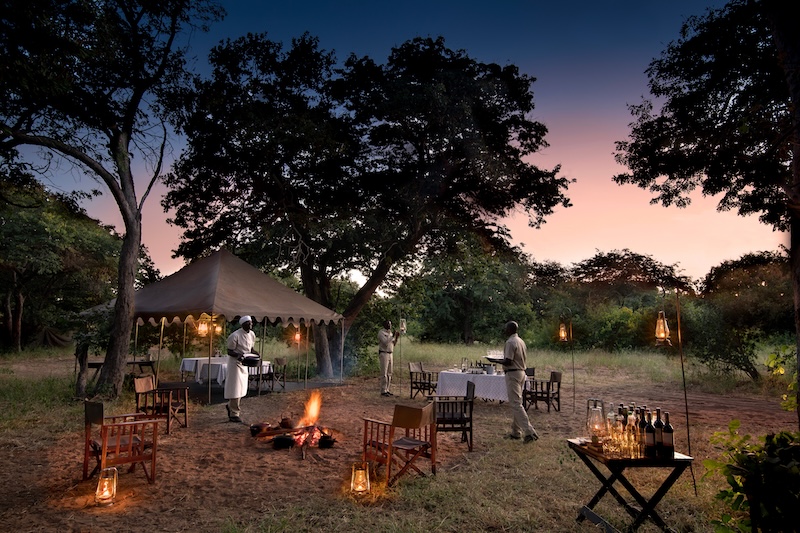
Botswana is renowned for its pristine wilderness and dedication to conservation, setting a global example for sustainable safari tourism. Its varied ecosystems, including the vast Okavango Delta and dry savannahs support healthy populations of Big Five species in relatively undisturbed habitats. Botswana’s low-impact tourism philosophy prioritizes quality over quantity, offering travellers intimate wildlife encounters with minimal environmental footprint. The country’s success in anti-poaching and habitat protection efforts has resulted in thriving wildlife populations.
Big-5 Highlights:
- The Okavango Delta provides unique Big Five sightings, with elephants and buffalo commonly spotted and lions and leopards often found near water.
- Rhinos have been reintroduced into select Delta reserves and Moremi Game Reserve, but sightings remain rare.
- Chobe National Park is a haven for elephants and supports healthy populations of lions and buffalo, with seasonal leopard sightings.
5. Namibia
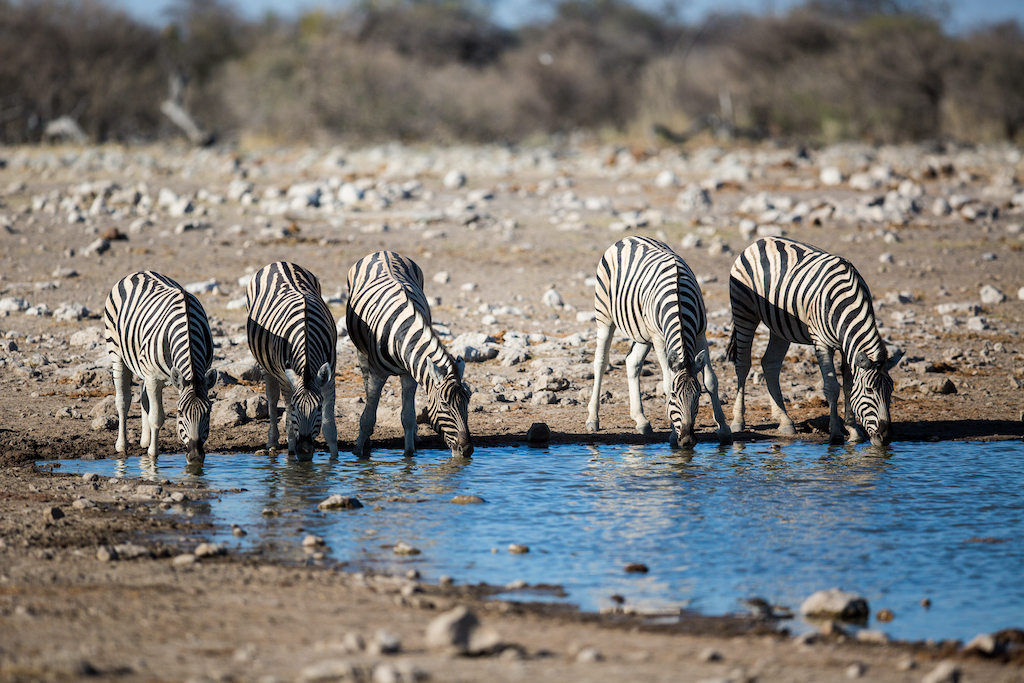
Namibia offers a distinctive safari experience shaped by its dramatic arid and semi-arid landscapes, where wildlife has adapted to survive in some of the harshest environments on the continent. Despite the challenges posed by drought and sparse vegetation, Namibia supports populations of the Big Five, particularly in protected areas like Etosha National Park. The country’s conservation programs focus on protecting endangered species such as black rhinos and desert-adapted elephants. Namibia’s unique habitats and conservation success stories provide an educational safari experience that highlights the resilience of wildlife in extreme conditions.
Big-5 Highlights:
- Etosha National Park is the best spot in Namibia for Big Five sightings, particularly at waterholes during the dry season.
- Black rhinos are relatively common in Etosha and surrounding private reserves, such as Ongava.
- Desert-adapted elephants and lions can be tracked in Damaraland, providing one-of-a-kind Big Five experiences in harsh terrain.
6. Zimbabwe
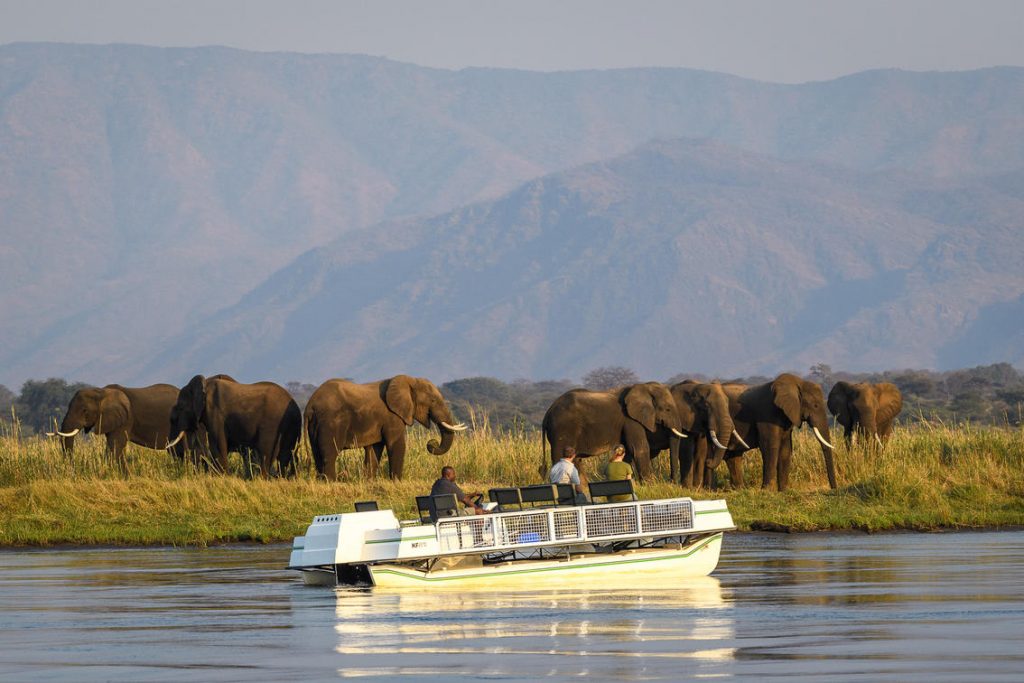
Zimbabwe is an emerging safari destination rich in wildlife and cultural heritage, known for its large, relatively undisturbed wilderness areas. The country’s parks and reserves provide critical habitats for the Big Five, with some regions boasting some of the densest elephant populations in Africa. Zimbabwe’s conservation efforts, combined with its fewer tourist crowds compared to neighbouring countries, offer visitors a more raw and immersive wildlife experience. Its diverse landscapes, from riverine forests to open plains allow for varied Big Five encounters that contribute to a deeper understanding of Africa’s ecological complexities.
Big-5 Highlights:
- Hwange National Park is Zimbabwe’s largest game reserve and offers abundant sightings of elephants and buffalo, alongside healthy populations of lions, leopards, and rhinos.
- Mana Pools National Park, a UNESCO World Heritage site, is renowned for its walking safaris and close wildlife encounters, especially with elephants and buffalo near the Zambezi River.
- Matobo National Park offers unique sightings of black and white rhinos amid stunning granite formations and is also a stronghold for leopard conservation.
When to Go on a Big Five Safari
Timing is one of the most important factors in planning a successful Big Five safari. Africa’s major safari destinations generally experience two main seasons: the dry season and the wet season, each offering distinct advantages and wildlife behaviours that can significantly affect what you see and how you experience the safari.
Dry Season (Winter):
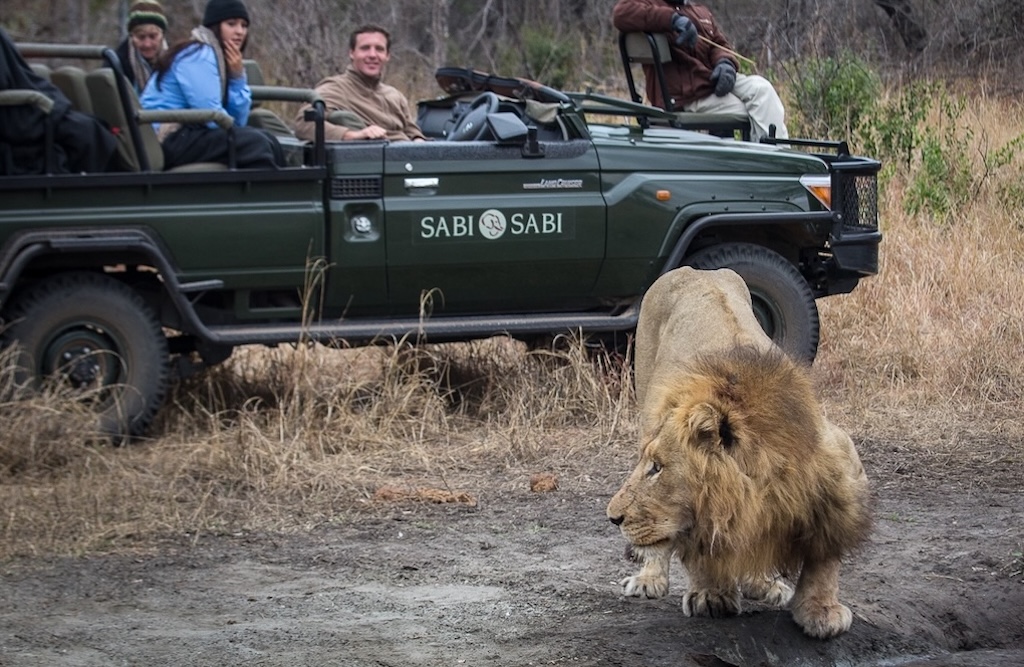
Usually from May to October, the dry season is considered the peak safari time across most regions. During this period, vegetation thins out considerably, and water sources become scarce, naturally concentrating animals around rivers, lakes, and waterholes. This makes it easier to locate the Big Five and other wildlife, as animals congregate in predictable areas. The cooler daytime temperatures and minimal insect activity also enhance comfort and reduce the risk of diseases like malaria. Additionally, predator-prey interactions become more visible as prey gather in smaller areas, often leading to dramatic hunting scenes. However, this is also the busiest time for tourism, so parks and reserves can be crowded.
Wet Season (Summer)
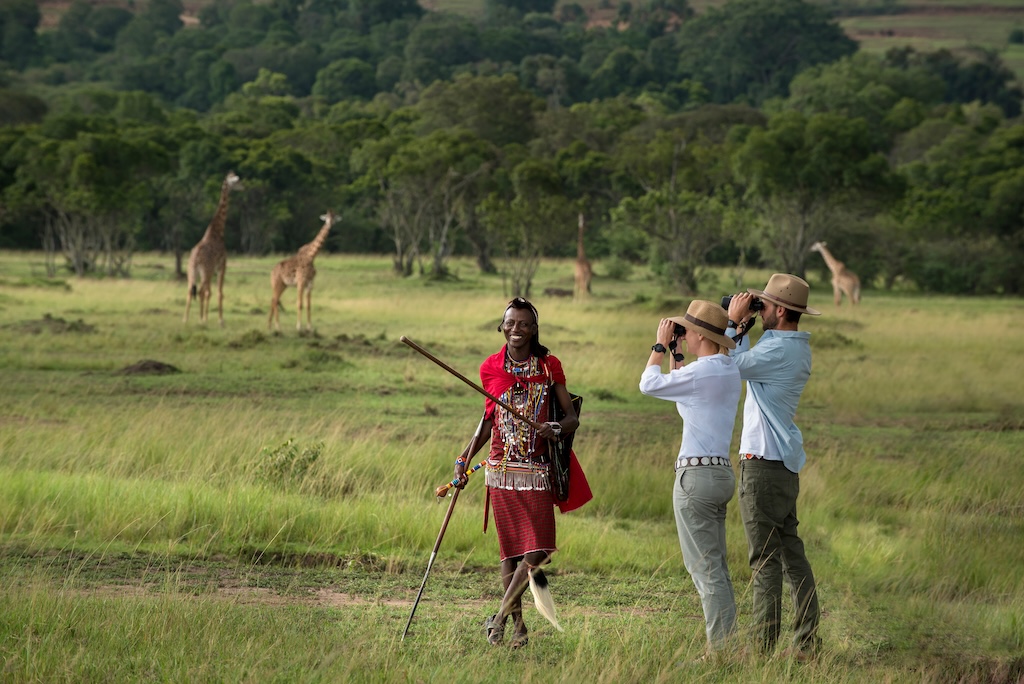
From November to April, the wet season transforms the landscape into lush, green expanses teeming with new life. This is the time when many animals give birth, so it’s an excellent season for witnessing young calves, cubs, and new-borns, offering heart-warming wildlife encounters. The plentiful rainfall leads to an abundance of food and water, causing wildlife to spread out more widely, which can make sightings less predictable. However, this season attracts numerous migratory birds, making it a paradise for birdwatchers. The rains also refresh the environment, creating beautiful scenery and vibrant ecosystems. Another advantage of the wet season is that it is typically less crowded and safari costs may be lower. Some roads may be more challenging to navigate due to mud, but experienced guides can still provide exceptional wildlife viewing.
By understanding how the seasons affect animal behaviour, vegetation, and accessibility, travellers can better choose the timing of their safari to match their interests, whether that’s maximising wildlife sightings during the dry months or enjoying the lush landscapes and new-born animals of the wet season.
The single best place to see all of the Big Five
While the big five can be found across several countries, Kruger National Park in South Africa, particularly the Sabi Sands Game Reserve within the Greater Kruger Nataional Park region, offers the best opportunities to see all five in one place, and here are 5 reasons why:
- All Big 5 are abundant, and sightings are very reliable.
- Leopards, the hardest of the Big 5 to spot, are easily seen here, often the highlight.
- Excellent guides and trackers, as well as the ability to go off road in private reserves.
- Luxury to mid-range options, but also affordable self-drive in the main Kruger area.
- Well-developed tourism infrastructure (airports, lodges, good roads).
If you are planning a Big 5 safari in the Kruger, we recommend reading these articles to find out when to go and where to stay.
- Best time to go on Safari to the Kruger
- Top Luxury Lodges in the Kruger National Park
- The Greater Kruger Park Explained
Safaris Down South is a globally accredited and trusted safari agency specialising in Big Five safari tours and holidays in Africa, offering personal planning assistance and expert advice. Contact our team here.
